Tofu Kaiseki
The area around Oyama Afuri Shrine has long been known for its tofu cuisine.
Part of the approach to the shrine includes a place called “Tofu-zaka,” so named because during the Edo period (1603-1867), when the shrine was at its most prosperous, visitors would place tofu in the palm of their hands and slurp it as they walked along the path.
(So there has been a culture of eating tofu at tourist spots since that time!)
Even today, there are many restaurants along the approach to the shrine where visitors can enjoy tofu dishes, filling the stomachs of visitors to the shrine.
Oyama is famous for its fine-textured silken tofu. It is characterized by its softness, smoothness, and smooth texture.
Tofu is an essential part of Japanese cuisine. You may have the impression that it is healthy and light, but Oyama’s tofu is different!
Why Tofu became a specialty
The rich natural environment and historical background are deeply related to the reasons why tofu has become such a specialty product. There are four main reasons why the Oyama area has become a famous tofu production area.
1,High-quality water resources:
Water is a very important factor in the production of tofu. The area, located at the foot of Mt. Oyama, is blessed with an abundance of spring water, and this pure water is ideal for tofu production. This water is what produces high-quality tofu.
2,Many soybeans were dedicated to the shrine:
Many people from all over Japan came to visit the Afuri Shrine. When they came to visit the shrine, they brought various offerings to the shrine. Among them were many soybeans. It is said that because clean water and soybeans were gathered in large quantities at hand, soybean production flourished.
3,Shojin Ryori culture:
Shojin ryori is a traditional Japanese vegetarian cuisine based on Buddhist teachings. It is mainly eaten by Buddhist monks as part of their ascetic training, but is now also popular among the general public. Since the Oyama Afuri Shrine has long been an object of worship, it has been visited by many worshippers and ascetic monks. As a result, vegetarian cuisine, which avoided animal products, was offered as their diet, and tofu was valued as a central ingredient.
4、It was suitable as a meal for worshippers on long journeys:
The only means of transportation for travel in the old days was, of course, on foot. Therefore, many weary worshippers after long journeys would have gathered at Oyama. Tofu, which is relatively easy to preserve, easy on the stomach, and rich in protein and calcium, was a suitable means of nourishment for the worshippers.
These various conditions combined to make tofu a major specialty of Oyama.
Even today, there are many tofu stores and restaurants serving tofu dishes in the Oyama area, and the tradition is still carried on. Tofu kaiseki cuisine is especially famous. You can taste unique kaiseki cuisine at various restaurants.
Tofu kaiseki cuisine is a Japanese course meal with tofu as the main ingredient. The course includes a variety of tofu dishes such as yose-dofu, yuba (bean curd), sesame tofu, dengaku, and soy milk hot pot. Each dish is prepared with an abundance of fresh water from Mt. Oyama, and is characterized by a gentle flavor that enhances the deliciousness of the ingredients.
I actually went to try the Tofu kaiseki!
Tofu kaiseki is unique to Oyama and even I, a Japanese, have never had it.
I would like to report on one dish at a time, as many interesting dishes were served.
This time, I went to a restaurant that originated tofu cuisine called Wachu-sou!
Originally, the restaurant was a lodging facility, but now it operates as a tofu restaurant. (Many of the tofu restaurants in Oyama trace their history back to that time.) The restaurant is easy to find as it is on the right side of the road, just after you start climbing up the Koma approach, and there is a signboard on the right.
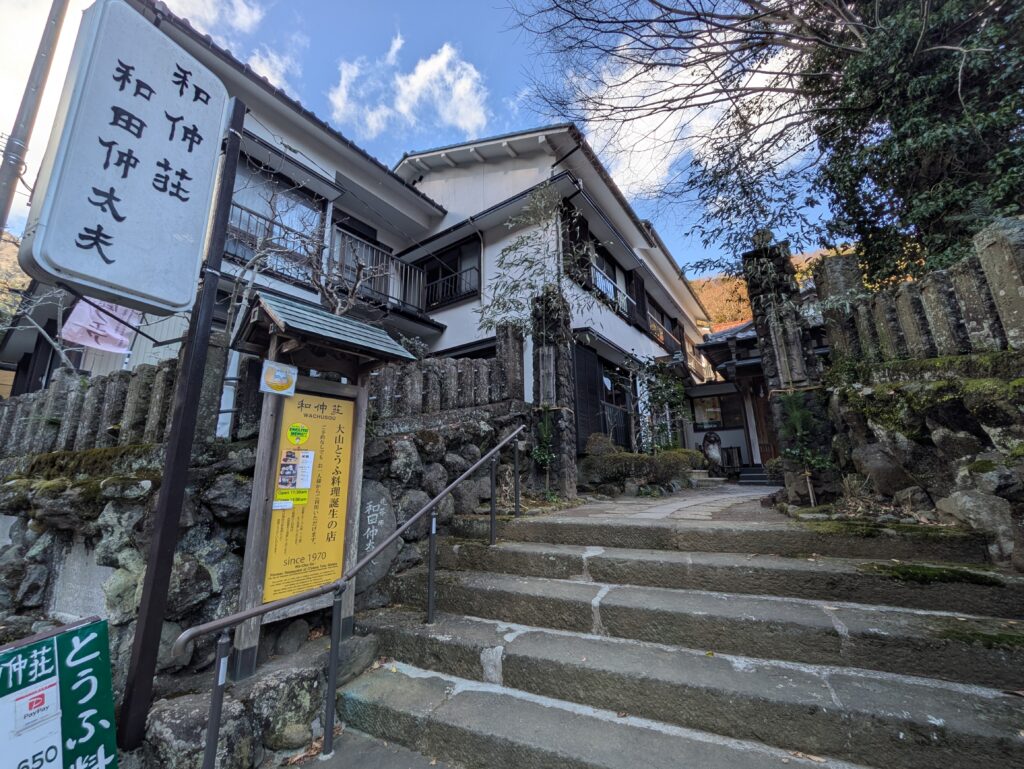
Entering through the Japanese-style entrance, you are guided to a large Japanese-style room and seated.
Dishes are only available in 3-, 5-, and 7-course menus, which seem to include rice and soba noodles as a set. (This system is typical of tofu restaurants in Oyama.)
This time, I chose the five-course meal. As a result, I was very full.
There is no menu list with detailed information, so you have to wait and enjoy what you will be served.
1,Tofu Yose
The first dish served with tea was tofu yose, a kind of yokan jelly made of tofu and agar.
This dish is not included in the course, but is a kind of confectionary to be served with tea. It had a slightly sweet, elegant taste and a smooth texture, but it seemed more like a side dish than a snack.
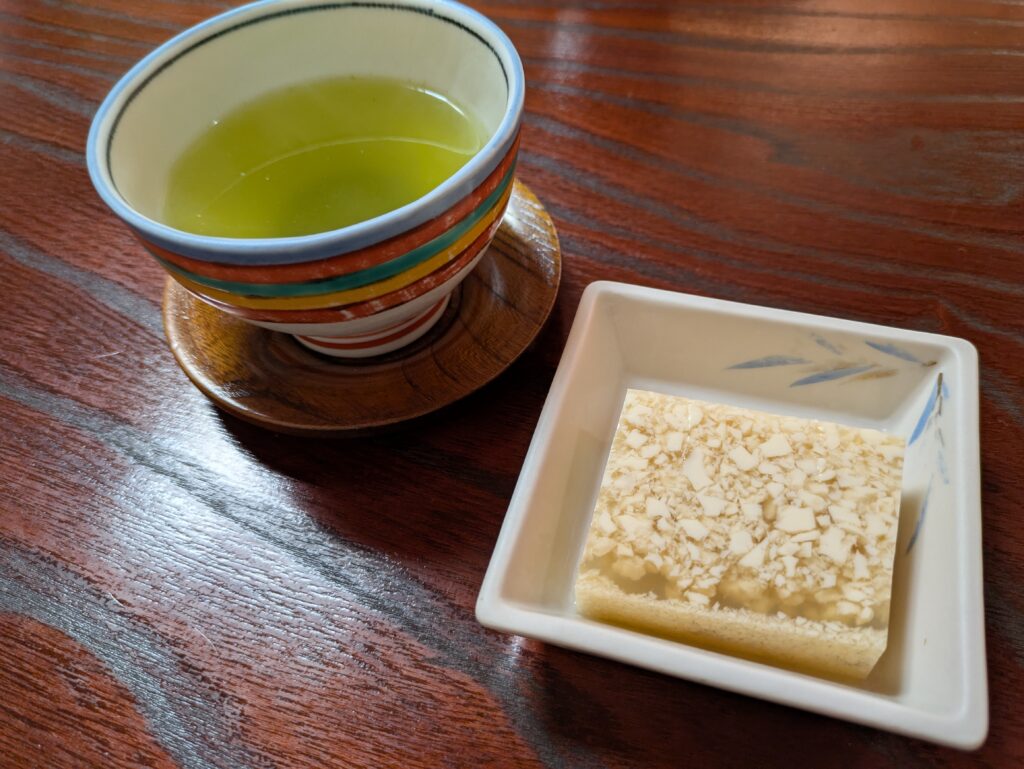
2,Tamagoyaki Modoki (Omelet)
The first dish of the course was tamagoyaki modoki. It was filled with finely chopped vegetables and tofu, and when placed in the mouth, it did indeed have the texture of a hard omelet. It was a dish worthy of a satisfying first course.
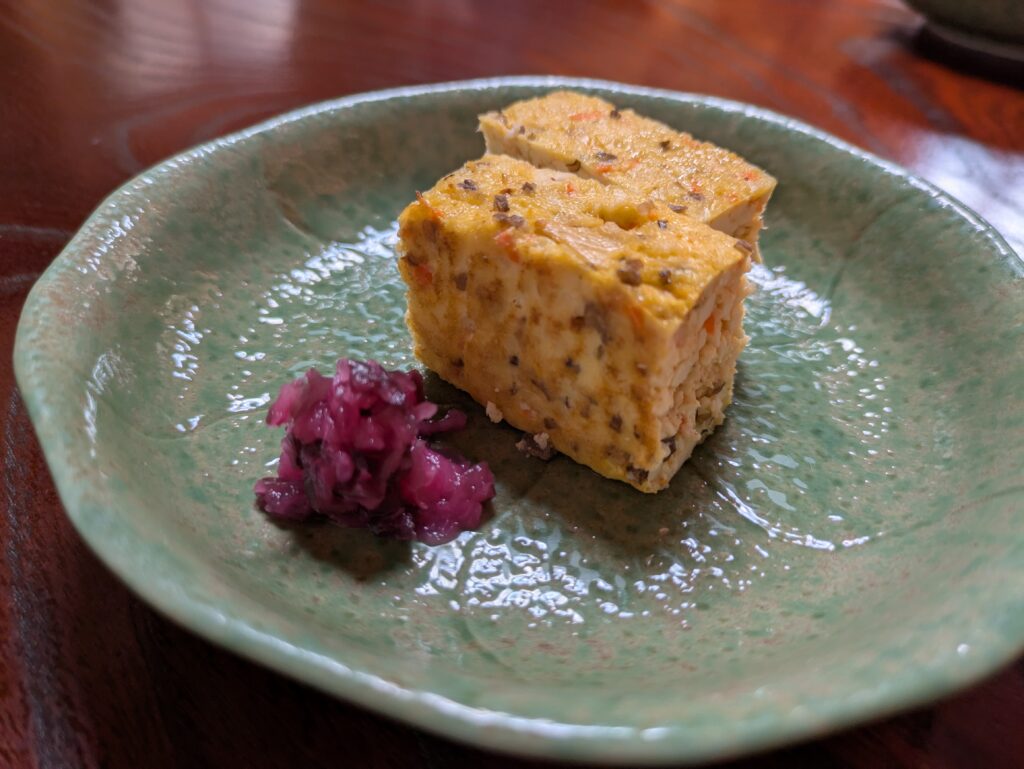
3.Ganmodoki
This dish is made by mashing tofu, mixing it with carrots, lotus root, burdock root, etc., and deep frying it in oil, and is a staple of Japanese vegetarian cuisine. The thick broth soaks into the tofu, and the delicious flavor spreads in your mouth as you bite into it.

4.Yamakake Tofu
This dish consists of sliced tofu topped with grated yam and wasabi. This time it was also served with sweetly seasoned mushrooms and wild vegetables. The sauce is covered with a kind of soup stock. This is one dish where you can enjoy the characteristic smooth and slippery texture of Oyama’s tofu.
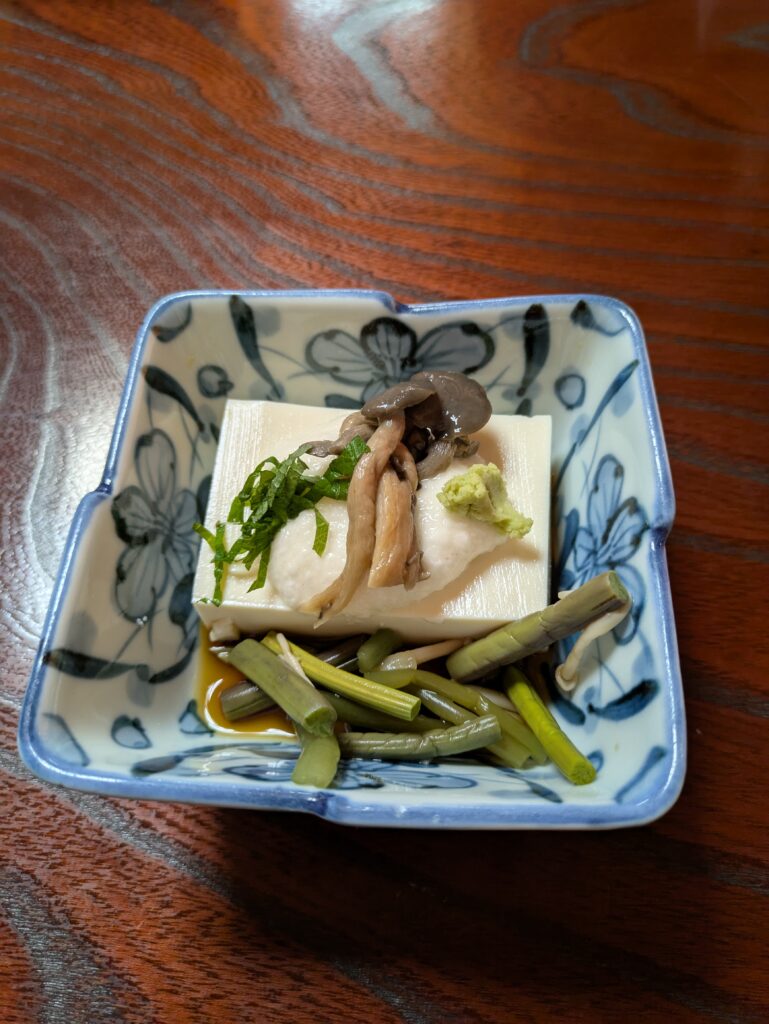
5.Gratin
Gratin with a large piece of tofu in the center. The white sauce and the hot tofu go well together, making it a hearty dish. Up to this point, we have only enjoyed Japanese flavors, but the white sauce, a Western-style dish, gave it a slightly different taste.

6.Steamed Tofu
This dish consists of tofu topped with an egg, shrimp, spinach, and other ingredients soaked in a rich broth.
It is recommended to eat the various ingredients in it all together. Garnished with small green onions and lemon, it is like a small hot pot.
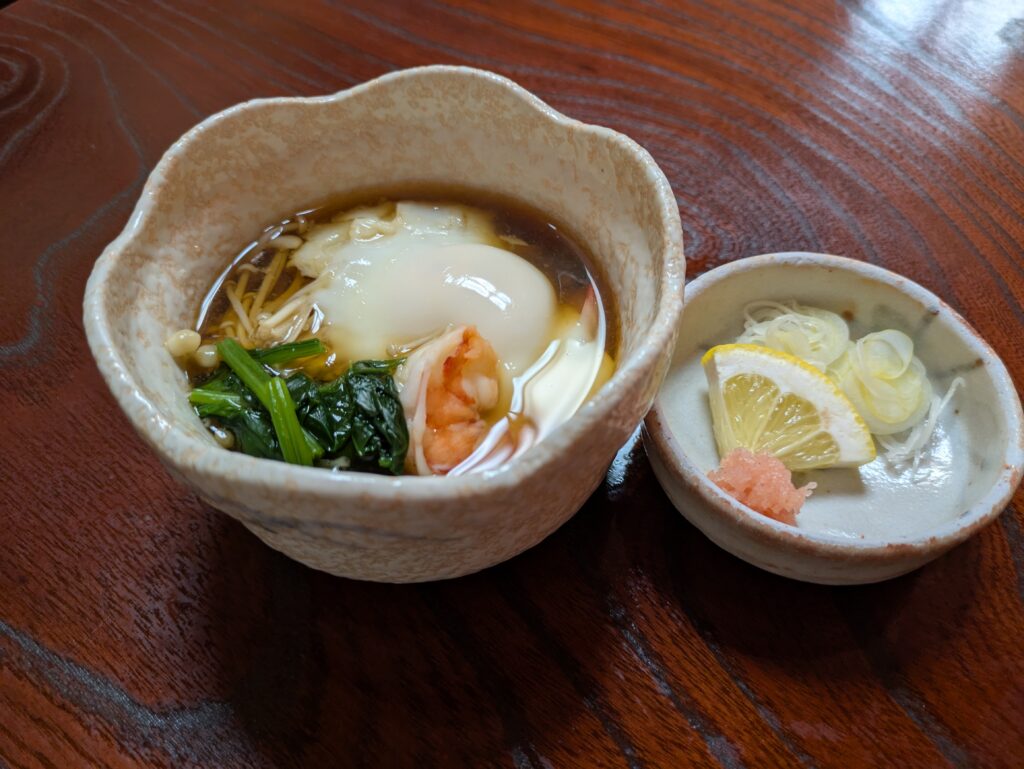
Before going to the restaurant, I was worried that I would get bored with all the tofu dishes, which were all the same, but I found a very rich repertoire of dishes!
Although not vegetarian, all the dishes were very healthy and I felt light even though I was full.
A variety of dishes that can only be tasted here
Tofu kaiseki cuisine in the Oyama-Afuri area is a special taste of history and tradition. Dotted with historic inns and restaurants, there are many places to enjoy tofu kaiseki cuisine in this area. Each restaurant has its own originality and ingenuity, and the dishes served are different. For example, another restaurant may offer yuba sashimi or soy milk hot pot.
Reservations may be required, so it is recommended to check in advance before visiting! Tofu dishes nurtured by the clean spring water and nature will surely heal your body and soul. Why not enjoy tofu dishes unique to this area during your visit to Oyama?
